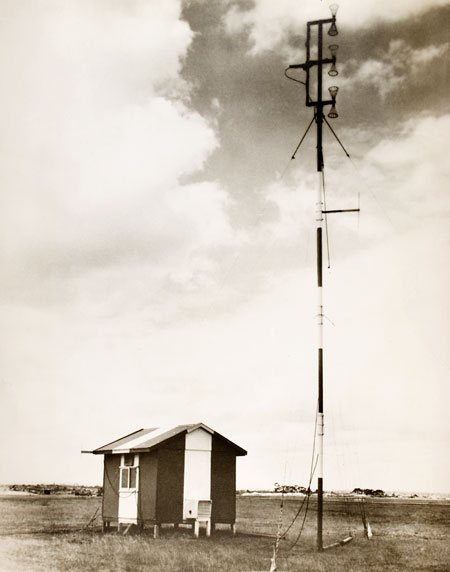
An example
of the research involved in the development
of the Australian DME system applied to the antenna, which seemed
simple enough; three conical dipoles mounted one above the other and
supported from a laminated Oregon pole. A wooden mast was required in
order to minimise interference with the signal and ensure an omni-directional
radiation pattern. The photo above shows an early DME installation,
probably an experimental unit.
The CSIRO
Division of Forest Products assisted by constructing several masts to
the specified standard of warp and twist. They found glue that was resistant
to water and fungus attacks, and established a technique for gluing
under pressure. Several masts were tested to destruction by applying
a transverse load to ensure a safety factor in the event of strong cross
winds. During acceptance tests it was found that the aerial characteristics
(in particular, the input impedance to the aerial) changed during a
rainstorm. Another series of tests was on the effects of snow and ice
on the performance of antenna.

Left: The final production antenna system on its specially-developed wooden mast. The conical dipoles are the antennas - the antenna-like pole on top of the mast is a lightning conductor. blah blah blah
Click here to see a later complete production DME installation
(Photos: CAHS collection)
Back to the main Communications & Navigation index
If this page appears without menu bars at top and left, click here